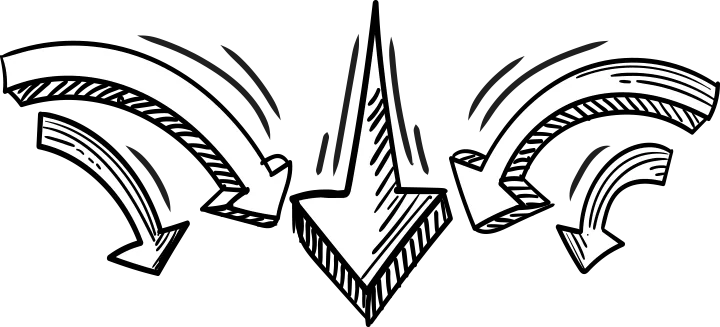This is the 3rd part in a 5 part series on incremental sales in affiliate marketing. Catch up on Part 1 and Part 2. We have discussed definitions and some possible ways to calculate incremental. Today let’s dive into who may want to do this.
Who is this right for?
We are currently walking several clients through this process right now. One has a mature program of over 5 years and is primarily retail with lots of promotional periods and coupons. Another is B2B, no coupons and has a mature program of over 5 years. Another had a vibrant program, didn’t have time to manage partners and had a lot of nefarious behavior take control. They reduced the program to only a handful of affiliates and are now ramping up.
I tell you that to demonstrate different characteristics of an advertiser and whether it is right for them or not. We do have a client who wants to go through this process, but it simply isn’t right for them. Why? Let me lay down some bullet points:
- They are a new company and a new brand
- They have very little extra-affiliate marketing supporting their sales
- They offer no promotions or coupons
- They are a cross between B2B and B2C, mainly power consumers that run small businesses or freelance
Sometimes it’s easier to say who shouldn’t be going through this process than who should. This advertiser is new. They haven’t been around for years and they don’t have a share of the consumers’ life that would require incremental analysis. Whatever sales they are receiving isn’t coming from brand exposure outside the affiliate channel. At some point, that will change, but right now, that isn’t the case.
Their current marketing budget is almost 100% entirely dedicated to the affiliate channel. They run ppc through an affiliate as well. So really, they have one channel – affiliates. It’s hard to justify rewarding sales to another channel that doesn’t exist. It’s relatively safe to assume that sales through affiliate channel are happening because of the channel, not because the customer saw a marketing piece somewhere else, then went to an affiliate to place the order through.
No promotions – One of the huge arguments against affiliates is what is called Cart Sniping. This is when a customer walks through an advertiser’s site, finds a product they want to purchase and adds it to their cart. They go through the entire shopping cart process with every intention of completing the transaction and then search in another window for a coupon, deal or discount. They find one, click through the link and make a purchase and the affiliate gets credit for the sale. An argument can be made by both sides that no value was added by the affiliate OR that the conversion would not have taken place without the affiliate making the deal public. If an advertiser has no offers, it’s very difficult to say that cart sniping is happening. With offers, advertisers are increasingly looking to reward these sales differently, if not pay out zero for them. And networks are providing technology to combat that.
B2B – Retail advertisers deal with cart sniping, multi-channel attribution and similar things that relate to incremental more than B2b companies. Because our client is primarily B2B, the arguments against incrementality are not as strong as retail. When a customer goes to another site before placing an order with a B2B advertiser, it is most likely for research, to read a review, to get another perspective on the sale and/or to confirm their decisions with their community and their influencers. Because of that, I would argue that the sale is more valuable because they did more research and thus incremental. But the analysis may not be necessary in this case. Especially if the merchant has all the characteristics I outline above.
So who is it right for? Again, I can list some recommendations, but you’ll have to make the decision yourself. If you exhibit some of these characteristics, you may want to start down this path:
- Active, multi-channel marketing campaigns (SEO, PPC, Email, Re-targeting, Re-marketing, catalog, brick and morter etc.)
- Mature affiliate program of over 3 years
- Established brand
- A company that is focused as much on profitability as overall top line sales
- If you are being pressured to show profitability in different ways than revenue – cost
- If the sum of all your online marketing channels’ revenue is greater than the total cash you actually received
- If you have an active affiliate management team that is reaching out to all your affiliates
- If you have had the sales from your coupon, loyalty, ppc or other category of affiliates questioned from above
- Your company tracks new to file, first click, last click, and other data on sales. Without good data you will not get anywhere in this regard.
And again, it’s isn’t right for everyone, but it can lead to better allocation of your resources and not only a better top line on your P&L but a better bottom line too.
What can you do?
Advertisers: Get ahead of the ball on this one. Affiliate managers are going to be asked about profitability, new vs existing customers, and incremental more and more. So get familiar with it. Start collecting data and make sure you push to evaluate incremental on a partner by partner basis. And keep reading…
Affiliates/Publishers: You need to get out ahead of this too. Those partners that ignore this will be left out of the budgetary process and will find themselves without revenue streams. Gather data on your customers. Work with your advertiser partners to learn about the customers you are sending them. Identify the reasons your traffic is incremental. How are you adding value? Do you know? Do you share that with your advertising partner? If there is interest, I can add a post to this series on ways I think affiliates can demonstrate incramentality.
In the next installment of this series, Part 4, we’ll talk about the type of data you should be gathering and what to do with that data after it’s gathered.


